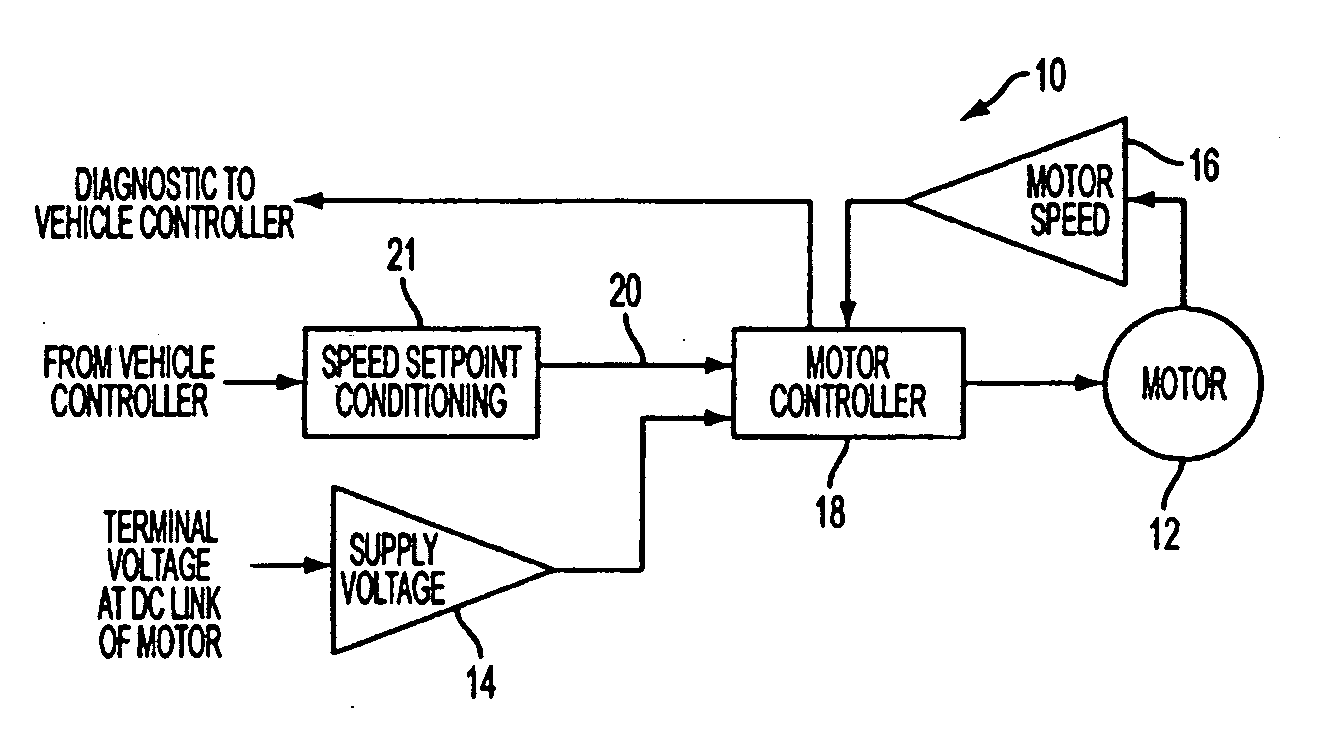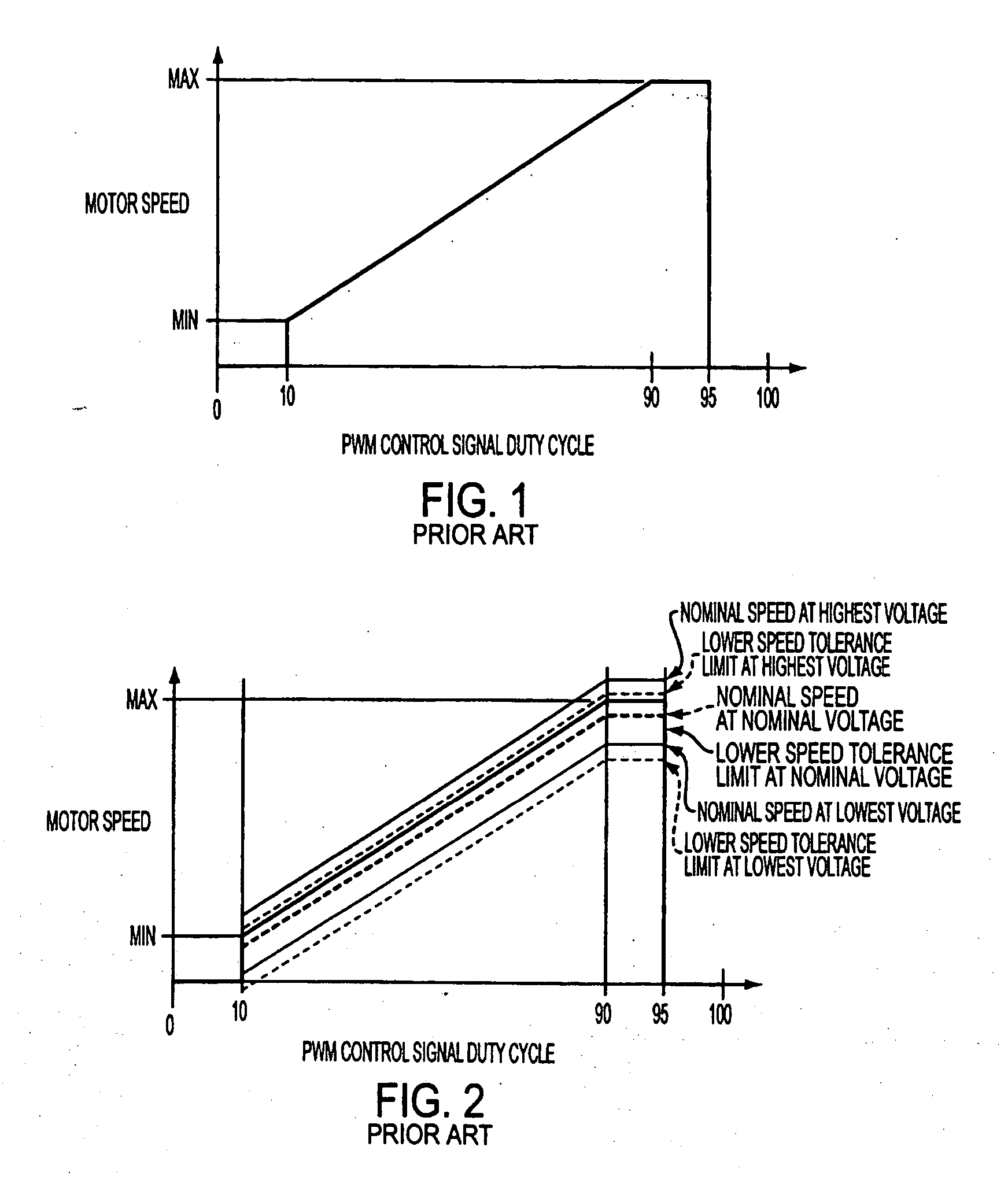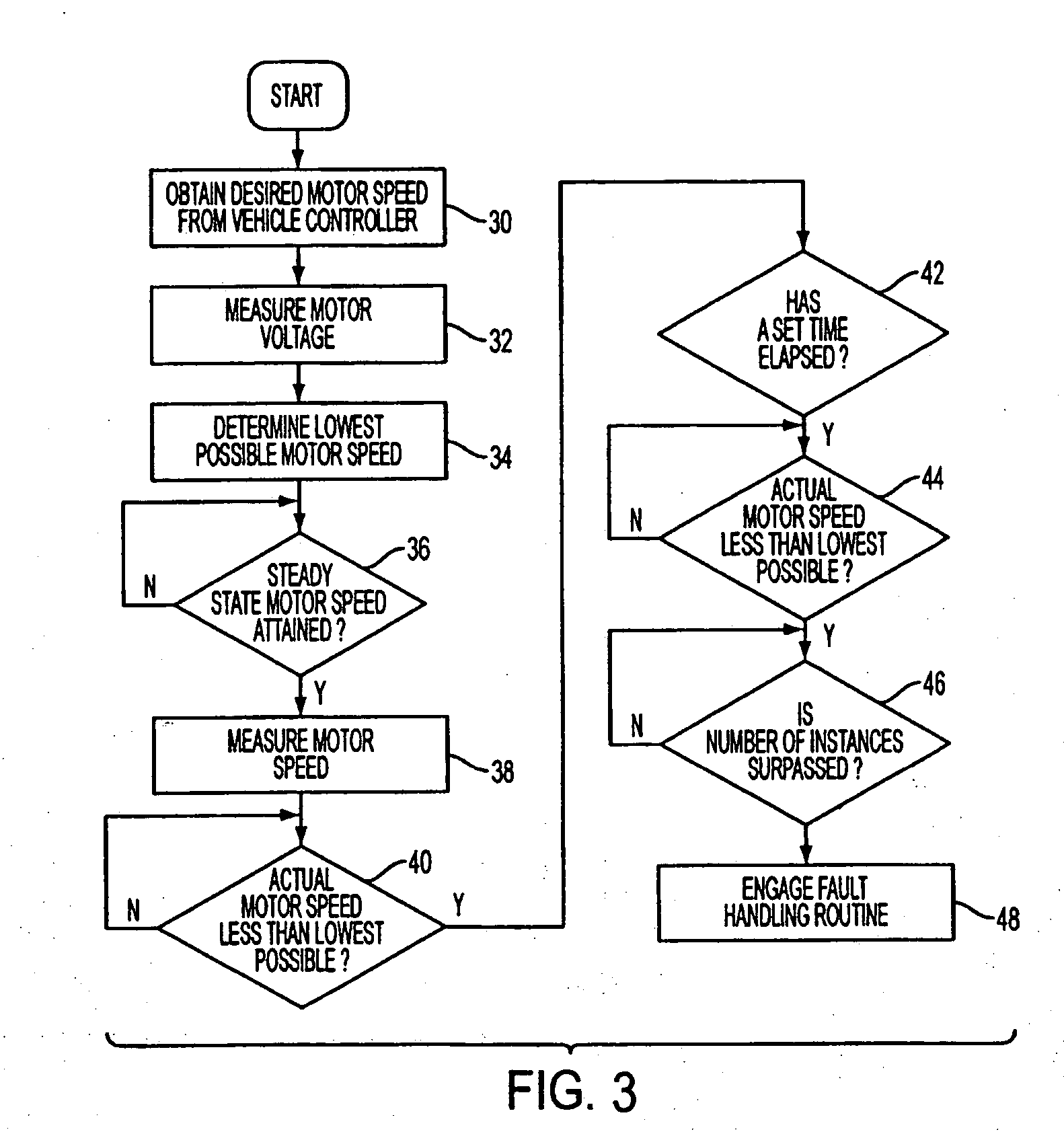Overload protection for DC motors
a dc motor and overload protection technology, applied in the direction of motor/generator/converter stopper, dynamo-electric converter control, ac motor stopper, etc., can solve the problems of damage to the motor, damage to the motor or the control mechanism of the motor itself, damage to the motor and/or the control circuitry,
- Summary
- Abstract
- Description
- Claims
- Application Information
AI Technical Summary
Benefits of technology
Problems solved by technology
Method used
Image
Examples
Embodiment Construction
[0020] With reference to FIG. 7, a closed-loop control system for a DC motor is shown schematically, generally indicated at 10, in accordance with the invention. The system 10 includes a DC motor 12, a voltage sensor 14 for determining a supply voltage of the motor, speed measuring structure, for example, a sensor 16, for measuring a speed of the motor 12, a conditioning circuit 21 and control electronics 18. The voltage sensor 14, for example, can include circuitry such as a resistor divider network fed to an analog-to-digital converter or could include a series of discrete values from a comparator chain. The speed sensor 16 can be, for example, circuitry for conditioning the back electro-magnetic force (EMF) induced in the motor windings, a Hall effect sensor, or a reluctance coil.
[0021] The control electronics or controller 18 can include a micro-controller, or analog control device. The speed set-point conditioning circuit 21 is associated with the controller 18 and receives a ...
PUM
 Login to View More
Login to View More Abstract
Description
Claims
Application Information
 Login to View More
Login to View More - R&D
- Intellectual Property
- Life Sciences
- Materials
- Tech Scout
- Unparalleled Data Quality
- Higher Quality Content
- 60% Fewer Hallucinations
Browse by: Latest US Patents, China's latest patents, Technical Efficacy Thesaurus, Application Domain, Technology Topic, Popular Technical Reports.
© 2025 PatSnap. All rights reserved.Legal|Privacy policy|Modern Slavery Act Transparency Statement|Sitemap|About US| Contact US: help@patsnap.com



